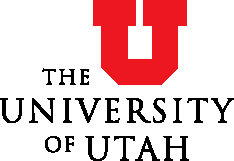DEB-TACE for Hepatocellular Carcinoma
| Status: | Terminated |
|---|---|
| Conditions: | Liver Cancer, Cancer |
| Therapuetic Areas: | Oncology |
| Healthy: | No |
| Age Range: | 18 - Any |
| Updated: | 6/23/2018 |
| Start Date: | August 2015 |
| End Date: | June 15, 2018 |
Surefire vs. Endhole for DEB-TACE: Quantifying Hepatic Artery Embolization to Improve Outcomes by Comparing Two Different Catheter Systems for DEB-TACE (QED Study)
Patients enrolled in this study have been diagnosed with hepatocellular carcinoma (HCC) and
are scheduled to have a procedure called drug-eluting bead trans-arterial chemoembolization
(DEB-TACE). During the DEB-TACE procedure, very small beads are mixed in with a chemotherapy
drug, doxorubicin, and delivered to the tumor through an arterial catheter.
The DEB-TACE procedure allows the treatment to be delivered directly into the liver. It also
causes arterial embolization, the process in which a blood vessel is blocked. Treatment of
HCC using DEB-TACE may help delay tumor progression and can downstage (decrease the size) the
cancer in order to meet the criteria which may allow patients to become candidates for liver
transplantation. The purpose of this study is to compare tumor response and medical outcomes
for patients who undergo DEB-TACE with standard endhole catheter versus Surefire® Infusion
System.
are scheduled to have a procedure called drug-eluting bead trans-arterial chemoembolization
(DEB-TACE). During the DEB-TACE procedure, very small beads are mixed in with a chemotherapy
drug, doxorubicin, and delivered to the tumor through an arterial catheter.
The DEB-TACE procedure allows the treatment to be delivered directly into the liver. It also
causes arterial embolization, the process in which a blood vessel is blocked. Treatment of
HCC using DEB-TACE may help delay tumor progression and can downstage (decrease the size) the
cancer in order to meet the criteria which may allow patients to become candidates for liver
transplantation. The purpose of this study is to compare tumor response and medical outcomes
for patients who undergo DEB-TACE with standard endhole catheter versus Surefire® Infusion
System.
Conventional transarterial chemoembolization with lipiodol/doxorubicin (cTACE) is known to
prolong survival compared to supportive therapy in certain patients with unresectable HCC,
including patients with unilateral portal vein invasion (PVI). TACE with doxorubicin-eluting
beads (DEB-TACE) is a relatively new modality associated with favorable systemic doxorubicin
exposure/toxicity and liver-specific toxicity compared to cTACE and studies have documented
its safety and efficacy. DEB-TACE is currently utilized for: (1) patients who have
unresectable HCC; and (2) patients who meet the Milan Criteria and currently on liver
transplantation lists.
The biggest challenge for these procedures has been the inability to actually quantify
embolization in a real-time setting to provide immediate feedback to the operator. Although
various methods, such as perfusion analysis with CT or MRI, have been described, these
require advanced imaging equipment/capabilities, extensive post processing analysis, and can
create challenging workflows.
Currently the best results occur when the dose is delivered in a highly targeted manner into
the tumor. Dense accumulation of embolic spheres or lipiodol into the tumor as documented by
CT has been shown to have improved outcomes. However, with standard endhole catheters
achieving maximum delivery of embolic agents is limited by the development of stasis and
subsequent non-target injury.
As DEB-TACE is performed through an endhole catheter with either stasis or substasis as an
endpoint. The current methodology is extremely subjective, lacks a quantifiable endpoint, and
results in various degrees of embolization on patients. Often this can result in repeat
procedures or the progression of tumor.
Recently, there has been FDA clearance of a new anti-reflux catheter, Surefire® Infusion
System (SIS, Westminster, CO). The current design has an expandable tip which collapses
during forward flow, and then dynamically seal off the vessel with reversal of flow,
analogous to a valve. SIS, with its expandable tip microcatheter, has been demonstrated
clinically to cause a slight decrease in intra-arterial pressure in the antegrade, or
downstream, vascular compartment. Although this device was designed primarily to prevent
retrograde reflux of embolic agents, the downstream blood pressure reduction may serve as a
biomarker on quantifying embolization.
The goal is to develop a method that: (1) allows maximum delivery of embolic spheres into the
tumor tissue to stasis without reflux; (2) enables direct real time numerical quantification
on the degree of embolization; and (3) provides an intra-procedural functional parameter
which could be used to guide the optimal therapeutic endpoints at the time of treatment.
prolong survival compared to supportive therapy in certain patients with unresectable HCC,
including patients with unilateral portal vein invasion (PVI). TACE with doxorubicin-eluting
beads (DEB-TACE) is a relatively new modality associated with favorable systemic doxorubicin
exposure/toxicity and liver-specific toxicity compared to cTACE and studies have documented
its safety and efficacy. DEB-TACE is currently utilized for: (1) patients who have
unresectable HCC; and (2) patients who meet the Milan Criteria and currently on liver
transplantation lists.
The biggest challenge for these procedures has been the inability to actually quantify
embolization in a real-time setting to provide immediate feedback to the operator. Although
various methods, such as perfusion analysis with CT or MRI, have been described, these
require advanced imaging equipment/capabilities, extensive post processing analysis, and can
create challenging workflows.
Currently the best results occur when the dose is delivered in a highly targeted manner into
the tumor. Dense accumulation of embolic spheres or lipiodol into the tumor as documented by
CT has been shown to have improved outcomes. However, with standard endhole catheters
achieving maximum delivery of embolic agents is limited by the development of stasis and
subsequent non-target injury.
As DEB-TACE is performed through an endhole catheter with either stasis or substasis as an
endpoint. The current methodology is extremely subjective, lacks a quantifiable endpoint, and
results in various degrees of embolization on patients. Often this can result in repeat
procedures or the progression of tumor.
Recently, there has been FDA clearance of a new anti-reflux catheter, Surefire® Infusion
System (SIS, Westminster, CO). The current design has an expandable tip which collapses
during forward flow, and then dynamically seal off the vessel with reversal of flow,
analogous to a valve. SIS, with its expandable tip microcatheter, has been demonstrated
clinically to cause a slight decrease in intra-arterial pressure in the antegrade, or
downstream, vascular compartment. Although this device was designed primarily to prevent
retrograde reflux of embolic agents, the downstream blood pressure reduction may serve as a
biomarker on quantifying embolization.
The goal is to develop a method that: (1) allows maximum delivery of embolic spheres into the
tumor tissue to stasis without reflux; (2) enables direct real time numerical quantification
on the degree of embolization; and (3) provides an intra-procedural functional parameter
which could be used to guide the optimal therapeutic endpoints at the time of treatment.
Inclusion Criteria:
- Patients aged 18 years or older, inclusive
- Diagnosis of HCC
- Meets UCSF criteria: a single lesion less than or equal to 6.5 cm in diameter or 2-3
lesions less than or equal to 4.5 cm with total tumor diameter less than or equal to 8
cm.
- No portal invasion or extrahepatic spread on imaging.
- Child-Pugh Class A or B.
- No previous chemotherapy, radiotherapy or transarterial embolization (with or without
chemotherapy).
- An Eastern Cooperative Oncology Group (ECOG) performance status of 0 or 1
- A discrete hepatic artery feeding the tumor with diameter of the vessels equal to or
greater than 1.5 mm.
Exclusion Criteria:
- Bilirubin levels greater than 3 mg/dl
- AST or ALT greater than 5 times upper limit of normal or greater than 250 U/l.
- Advanced tumoral disease (vascular invasion or extrahepatic spread, portal vein
thrombosis of bland or malignant origin), or diffuse HCC, defined as 50% liver
involvement).
- Contraindications for doxorubicin administration.
- Subject has a known history contraindicating contrast dye or iodine that cannot be
safely controlled via antihistamine, steroids, or with any other agent.
- Unable or unwilling to provide informed consent.
- Vessels providing flow to the tumor that are less than 1.5 mm in diameter.
- Women who are pregnant or breast feeding.
- Women of childbearing potential who are not using an acceptable method of birth
control (e.g., pill, patch, IUD, ring, condom, sponge, foam).
- Portal vein thrombosis of bland or malignant origin.
We found this trial at
11
sites
3700 O St NW
Washington, District of Columbia 20057
Washington, District of Columbia 20057
(202) 687-0100

Principal Investigator: Alex Kim, MD
Georgetown University Georgetown University is one of the world's leading academic and research institutions, offering...
Click here to add this to my saved trials
1720 2nd Ave S
Birmingham, Alabama 35233
Birmingham, Alabama 35233
(205) 934-4011

Principal Investigator: Ahmed Kamel, MD
University of Alabama at Birmingham The University of Alabama at Birmingham (UAB) traces its roots...
Click here to add this to my saved trials
201 Presidents Circle
Salt Lake City, Utah 84108
Salt Lake City, Utah 84108
801) 581-7200

Principal Investigator: Ryan O'Hara, MD
University of Utah Research is a major component in the life of the U benefiting...
Click here to add this to my saved trials
Baltimore, Maryland 20742
(301) 405-1000

Principal Investigator: Ahkter Nabeel, MD
University of Maryland As a globally-connected university offering a world-class education, the University of Maryland...
Click here to add this to my saved trials
Click here to add this to my saved trials
11100 Euclid Ave
Cleveland, Ohio 44106
Cleveland, Ohio 44106
(216) 844-1000

Principal Investigator: Jon Davidson, MD
University Hospitals of Cleveland The history of University Hospitals Case Medical Center is linked to...
Click here to add this to my saved trials
10700 East Geddes Avenue
Denver, Colorado 80112
Denver, Colorado 80112
Principal Investigator: Dominic Yee, MD
Click here to add this to my saved trials
UCLA UCLA's primary purpose as a public research university is the creation, dissemination, preservation and...
Click here to add this to my saved trials
Click here to add this to my saved trials
70 Washington Square S
New York, New York 10012
New York, New York 10012
(212) 998-1212

Principal Investigator: Eric Aaltonen, MD
New York University More than 175 years ago, Albert Gallatin, the distinguished statesman who served...
Click here to add this to my saved trials
550 East Van Buren Street
Phoenix, Arizona 85004
Phoenix, Arizona 85004
Principal Investigator: Steven Chen, MD
Click here to add this to my saved trials
